What is printing rollers?
Print rollers are an essential component of any printer and there is many types of printing rollers. Responsible for transferring ink or toner onto the paper in a consistent and precise manner. The process of making print rollers involves several steps, including the selection of the base material, design and construction, and quality control.
The base material used for print rollers varies, depending on the type of printer and the desired quality of the final product. Common materials include rubber, silicone, and polyurethane. These materials are chosen for their durability, flexibility, and chemical resistance.
Once the base material has been selected, the design and construction of the print roller begins. The design must take into account the size and shape of the printer, as well as the desired thickness and texture of the print. The roller is typically made using a molding process, where the base material is poured into a mold and then cured under heat and pressure.
Quality control is an important aspect of the print roller manufacturing process. Each roller must be inspected for defects, such as uneven surfaces, air bubbles, or cracks. Any defects must be corrected before the roller can be used in a printer.
Types of printing rollers
- Conveyor Roller
- Ebonite Roller
- Lamination Roller
- Metal Roller
- Offset Roller
- PU Roller
- Rubber Roller
- Stainless steel Roller
- Rotogravure Rubber Roller
Conveyor Roller
There is a many types of printing rollers first is conveyor rollers are an integral part of conveyor printing systems. These rollers are designed to facilitate the smooth movement of materials along the conveyor belt. They are made of high-quality materials like stainless steel, aluminum, or plastic, and come in a variety of sizes and shapes to suit different conveyor systems.
The rollers are positioned at regular intervals along the length of the conveyor belt and are powered by the drive system. As the belt moves, the rollers rotate, providing the necessary force to move the materials along the conveyor. Conveyor rollers are designed to be low maintenance and durable, ensuring that they can withstand the wear and tear of constant use.
They are also easy to install and can be customized to meet the specific needs of different conveyor systems. Overall, conveyor rollers play a crucial role in ensuring the efficient and smooth operation of conveyor printing systems.
Ebonite Roller
Second types of printing rollers is Ebonite rollers are commonly used in the printing industry for various applications. Ebonite is a type of hard rubber that is known for its durability and resistance to abrasion, making it ideal for use in printing rollers. The process by which ebonite rollers work involves transferring ink from the printing plate to the paper.
The ink is applied to the printing plate, and the ebonite roller is then rolled over the plate, picking up the ink and transferring it to the paper with each pass. The surface of the ebonite roller is typically engraved or etched with a pattern that helps to distribute the ink evenly and create the desired print quality. The ebonite roller is an essential component in the printing process and plays a crucial role in achieving high-quality prints
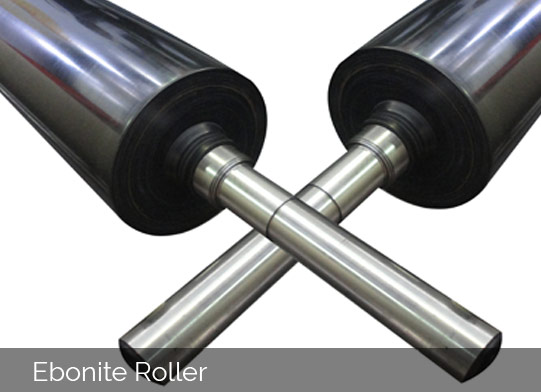
Lamination Roller
Third types of printing rollers Lamination printing roller is a crucial component of the lamination process. It is responsible for applying the adhesive to the film, as well as ensuring that the film is evenly applied to the surface. A lamination roller typically consists of a rubber or silicone surface that is mounted on a metal core.
The roller is heated to a specific temperature, which activates the adhesive on the film. As the substrate and film pass through the rollers, pressure is applied, which ensures that the film adheres to the substrate. The roller’s speed and pressure can be adjusted to suit different types of substrates or films.
Lamination rollers are available in various sizes and configurations, depending on the type of lamination application. Proper maintenance of the lamination roller is essential for achieving high-quality lamination results.

Metal Roller
Metal printing rollers are an essential component within the printing industry. These rollers are used to apply ink or other substances onto paper or other materials. The process involves an intricate system of gears, bearings, and other mechanical components that work together to ensure precise and consistent application of the ink. The rollers themselves are typically made from high-quality metals such as steel, copper, or aluminum.
These materials are chosen for their durability and resistance to wear and tear. The rollers are machined to precise specifications to ensure they fit perfectly within the printing press. Metal scooter is a common example of a metal printing roller used in the industry. The scooter is made from an aluminum alloy and is designed to provide smooth and even ink application.
The scooter is mounted onto the printing press and rotated at a controlled speed to ensure accurate and consistent printing. Overall, metal printing rollers are an essential component within the printing industry and play a critical role in ensuring high-quality print output.

Offset Roller
Offset printing rollers are an essential component of the offset printing process. These rollers transfer ink from the printing plate to the paper, creating high-quality prints with precision and accuracy. Offset rollers work on the principle of lithography, where the ink and water are kept separate on the same plate surface.
The printing plate is designed with a series of ink-receptive and water-receptive areas. As the plate rotates, ink is applied to the ink-receptive areas, while water is applied to the water-receptive areas. The offset roller then picks up the ink from the plate and transfers it to the paper.
The roller’s surface is specially designed to ensure that the ink is evenly distributed, creating a sharp and clear image. Proper maintenance and cleaning of offset rollers are essential to ensure that they function correctly and produce high-quality prints.

PU Roller
PU printing rollers are an important component of the printing process, especially in industries where high-quality printing is required. PU Roller is made of Polyurethane material, which is highly resilient and durable. These rollers have a unique property of being able to maintain their shape and size even after prolonged use. PU rollers work by applying pressure to the printing plate, which transfers the ink to the substrate.
The surface of the roller is coated with a special ink-resistant material, which ensures that only the desired areas of the printing plate are inked. The material used in the construction of PU rollers makes them resistant to wear and tear, and they require minimal maintenance.
PU rollers are also highly effective in preventing slippage, which can affect the quality of the print. Overall, PU printing rollers are a reliable and efficient solution for businesses looking to improve the quality of their printing output.

Rubber Roller
Rubber rollers are an essential component of printing machines used in various industries. It is a cylindrical-shaped tool made of high-quality rubber material that is designed to transfer ink, paint, or other fluids onto the substrate. The working principle of rubber printing rollers is simple; it involves the transfer of ink from the roller to the substrate.
The rubber roller is mounted on the printing machine, and when the ink is applied to the roller, it is transferred to the substrate. The surface of the rubber roller is covered with tiny pores that help in ink transfer. The rubber material used in the rollers is chosen based on its hardness, elasticity, and durability.
The rubber rollers are designed in different shapes and sizes, depending on the printing machine’s requirements. They are also used in various industries such as paper, textile, plastic, and many more. The rubber printing rollers’ efficiency and performance are critical in achieving high-quality printing results. Therefore, it is essential to maintain and clean the rollers regularly to ensure their longevity and optimal performance.

Stainless steel Roller
Stainless steel rollers are widely used in various industries for printing applications. These rollers are made of high-quality stainless steel to provide durability, corrosion resistance, and longevity. The stainless steel rollers work by transferring ink or coating materials onto a substrate.
They have a smooth surface that helps in spreading the ink evenly without any smudging or smearing. The surface of the stainless steel roller is engraved with a specific pattern or design, which helps in creating the desired print or pattern on the substrate.
The roller rotates continuously, and the ink or coating material is fed onto the surface of the roller. As the roller rotates, it transfers the ink or coating material onto the substrate, creating a uniform print or coating. The stainless steel rollers are essential components in the printing industry, and their quality plays a significant role in the final print or coating output.

Rotogravure Rubber Roller
This is last types of printing rollers Rotogravure printing is a high-speed printing process that is widely used in the packaging and publishing industries. In this process, the ink is transferred to the substrate through a patterned cylinder called a Rotogravure Roller. The Rotogravure Roller is made up of a steel base that is coated with a layer of rubber. The patterned surface is etched onto the roller using a laser or chemical process. The patterned surface consists of tiny cells that hold the ink, which is then transferred onto the substrate.
The Rotogravure Rubber Roller plays a crucial role in the printing process. The rubber layer on the roller provides a cushioning effect that helps to transfer the ink evenly onto the substrate. The roller also helps to maintain a uniform pressure across the substrate, which is necessary for producing high-quality prints. The rubber layer on the roller is also resistant to wear and tear, which ensures that the roller lasts for a long time.
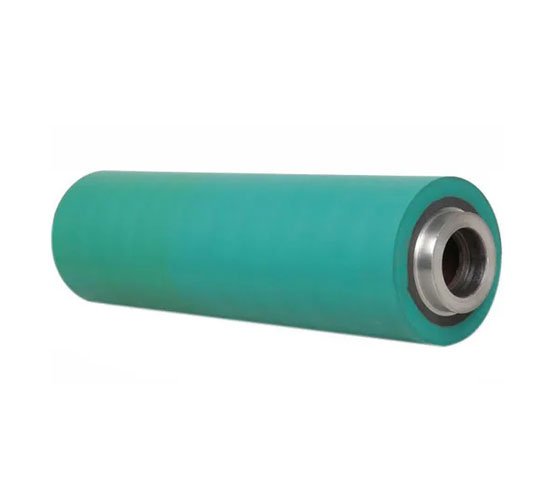
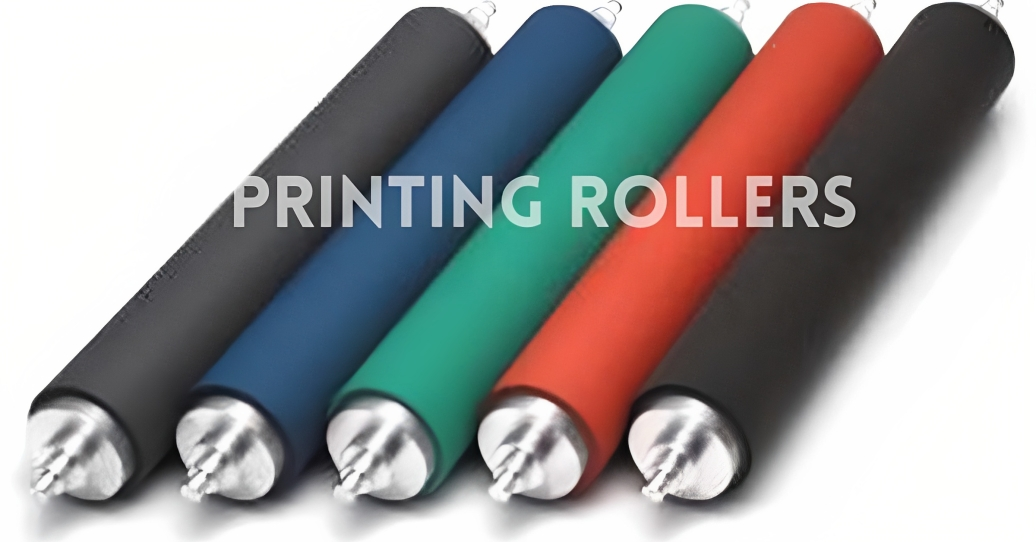
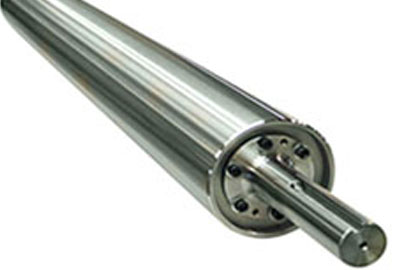
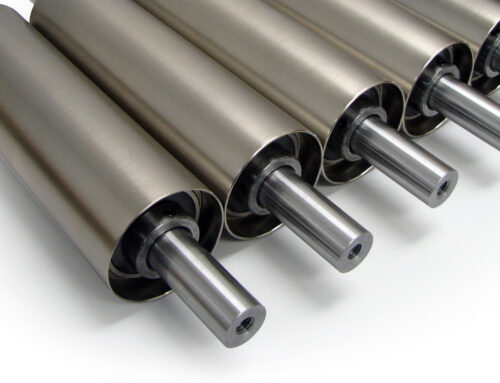
Leave A Comment